| 22nd February 2023 12:00 – 14:30 APPEG discussion over lunch in the House of Lords | Title: ‘Skyscrapers’ Chair: Professor the Lord Mair & Laurence Robertson MP Speakers: Professor Hanif Kara OBE, Founder, AKT II Marta Galinanes-Garcia, Desig Director AKT II Natasha Bellamy, Senior Design Manager, Laing O’Rourke |
Lord Mair began the meeting by thanking everyone for attending and introduced the first of the distinguished speakers, Professor Hanif Kara OBE, Founder AKT II.
Professor Hanif Kara OBE is the co-founder and Design Director of ATK II. He was the first structural engineer to be appointed to the UK Design Council’s Commission for Architecture and the Built Environment and he is currently on the National Infrastructure Commission Design Group and the Design Review Panel for the HS2 programme. Hanif has also recently been appointed as a Design Advocate for the Mayor of London. He was the first structural engineer to be appointed to the Royal Institute of British Architects and to the Aga Khan Award for Architecture.
Hanif began by thanking Lord Mair for the invitation. He then explained he would talk about skyscrapers through three points: the ‘why’, the ‘what’ and by showing some examples.
He explained that the world’s population has doubled in the last fifty years and will continue to rise. Population growth requires space for living and working, which leads people to cities. Hanif explained that building upwards helps solve this issue. He added that skyscrapers have also become markers of identity for cities and countries over time.
Hanif continued by explaining the development of skyscrapers throughout history. He noted the ‘grandfather of all tall buildings’, Shrewsbury Flaxmill, that was built using cast iron in the late 1700s. Hanif added that around one hundred years later, iron gave way to steel which, along with concrete, made it easier to build with height. Around 1950, these materials were combined with a third, glass.
Hanif showed attendees two examples of skyscrapers on presentation boards. The first of which was a building in Canary Wharf. The second was the Central Bank of Iraq Tower in Baghdad. Hanif explained that most skyscrapers are now being built in the developing world. He noted that this particular building in Baghdad is symbolic of a healing country and that there is a great pride in its construction. He concluded by saying that tall buildings are the future.
Natasha Bellamy
Natasha Bellamy is a Senior Design Manager at Laing O’Rourke who has twelve years of experience in the construction industry. She has worked on multiple projects including: schools, retail developments, high rise buildings and residential buildings. Her current role is on the Olympia redevelopment project, a fourteen-story office building.
Natasha explained that she wanted to talk about The Leadenhall Building, with which she was involved and is a source of personal pride. She explained that ‘The Cheesegrater’ is a 225-metre-tall building which has a tapering shape on one side which was needed due to London planning requirements. She explained that building such a large building in such a small space was a real challenge. Natasha added that 85% of the building was built from modular construction (ie in a factory and then assembled on site), and during the height of the project, they constructed a floor every two days. The average would have been around twenty-one days had they not utilised this modern form of construction. She continued that the team used pre-cast slabs for the first time on The Leadenhall Building and stressed the importance of building digitally first.
Natasha concluded by talking about displacement and explained that horizontal movement is not uncommon for tall buildings. However due to the unusual shape of The Leadenhall Building, it had an overall lean to the north and therefore plans were needed to control this early on in the construction process.
Marta Galiñanes-Garcia
Marta Galiñanes-Garcia is a Design Director at ATK II and has over twenty years design experience in consultancy and construction. She oversees ATK II’s carbon approach, encompassing several industry-leading initiatives. Marta is a member of the UK Green Building Council, the Circular Economy Group and she regularly contributes to think-tanks such as New London Architecture.
Marta explained that she would talk about skyscrapers in the context of sustainability and posed the question: ‘Are skyscrapers sustainable?’.
Marta stated that the world population is increasing, drawing more people into cities. Skyscrapers are able to facilitate these cities using only a small footprint, facilitating more green spaces. When provided with effective transport amenities and a sound location, they can also help to reduce congestion.
However, they are material and energy hungry and can have an adverse effect in terms of temperature and wind at the pedestrian level. Mitigating these adverse effects is where the engineer comes in. Marta explained that engineers like herself try to reduce, reuse and recycle when designing skyscrapers, whilst ensuring that the buildings have longevity and can themselves be reused.
Marta concluded by presenting some examples. The first was the High Lowe Building, initially a 1960s building that was recently reused as ATK II added thirteen floors by reusing materials from the foundation of the building. The second example was the Southbank Tower, which AKT II added eleven stories to by using the same core of the original building.
Q1 – Ian Gilbert (Worshipful Company of Scientific Instrument Makers)
Question: Do skyscrapers have a designed life-span and have any skyscrapers ever been successfully dismantled?
Answer: Professor Hanif Kara : For the last one-hundred years or so, buildings have been designed for a life-span of thirty to sixty years. Only now are we realising that this can be extended and most developers are now asking for skyscrapers to last for at least a century.
Q2 – Alexander Kruse (KCL Engineering)
Question: How are provisional skyscrapers tested for their ability to withstand weight and weather conditions before construction?
Answer: Marta Galiñanes-Garcia: Monitors on top of buildings allow us to monitor wind and movement, whilst also allowing us to go back and recalibrate design models. This allows us to refine our understanding over time.
Q3 – Stephen Metcalfe MP
Question: It is important to encourage more young people to consider careers in STEM subjects. What were the speakers’ routes into engineering and were there any barriers preventing them from doing so?
Answer: Natasha Bellamy: I did not take a traditional route as I did not really know what engineering was until Sixth Form. I should have been exposed to engineering earlier and I encourage schools to expose younger people to STEM subjects.
Marta Galiñanes-Garcia: I knew from an early age that I wanted to be an engineer, as I was fortunate enough to have been exposed to engineering at primary school. Therefore, I took Maths, Chemistry and Physics at Sixth Form and took a very traditional route.
Professor Hanif Kara : I was born and raised in East Africa and did not know much about engineering itself. But I did know that better buildings led to a better quality of life so therefore I had an interest in it and I took a apprenticeship. Don’t be put off by not taking a traditional pathway into engineering.
Q4 – Lord Makenzie
Question: What difference could have been made in Turkey had proper building regulations been enforced before the recent earthquake?
Answer: Professor Hanif Kara : In very rough terms, around fifty-percent of the buildings that collapsed would not have done so with proper regulations. Many of these buildings were clearly not properly made and this proves why regulations are so important.
Q5 – Sam Stevens – Bristol Grammer School
Question: Are there any low carbon alternatives to glass, steel and concrete that could be used to make skyscrapers?
Answer: Marta Galiñanes-Garcia: Yes there are and there is a lot of research ongoing in this area. For example some small skyscrapers are now being made out of timber. There is also a lot of work going into reducing the amount of carbon in concrete.
Q6 – Ruairi Macdonald – Abbingdon School
Question: What are the similarities and differences between architecture and engineering?
Answer: Professor Hanif Kara : One is not possible without the other these days. The combination of the two is what results in the best outcome.
Q7 – Dr David Boyce – Uppingham School
Question: What is your least favourite skyscraper?
Answer: Professor Hanif Kara : By far it is the ‘Walkie Talkie’ building, which I just do not like for a variety of reasons.
Q8 – Dr Salahadin Adrwish – Westminster Kingsway School
Question: What are your thoughts on the Burj Khalifa and whether it’s a failure?
Answer: Professor Hanif Kara : I am not an architect, but the engineering feat of the Burj Khalifa has shown us how far humanity can push itself.
Q9 – Fred Beale (King’s College London)
Question: Are there certain buildings that cannot have their lifespans extended? And what happens to these buildings?
Answer: Marta Galiñanes-Garcia: Everything is possible and it is usually possible to extend lifespans with the right materials and regular maintenance. If you want to do it, you always can.
Q10 – Katie Brudenell (St Helen and St Katherine)
Question: We always struggle to get students into civil and structural engineering. What can I do to encourage students to go into his field?
Answer: Natasha Bellamy: Exposure to the field is crucial, this can be done through taking students to visit universities for example and talking to structural engineers.
Marta Galiñanes-Garcia: There are many buildings in London where students can visit and see first hand what structural engineers do.
Q11 – Bronwen Hadden (Thales)
Question: Are there any old, seemingly antiquated techniques in engineering that are coming back into fashion?
Answer: Professor Hanif Kara : Lime mortar in brick work rather than cement is a centuries old technique that is coming back. We are now using deconstruction techniques that allow for the reuse of bricks, something that has been done for centuries.
Q12 – Maya Withall (UTC Portsmouth)
Question: How do you make skyscrapers as environmentally friendly as possible?
Answer: Marta Galiñanes-Garcia: There are many ways that skyscrapers can be made more sustainable For example, by using building materials that are low-carbon and shaping the building to reduce wind resistance. Skyscrapers can also be used for solar energy after their completion.
Q13 – Marco Pereira (King’s College London)
Question: How do some, seemingly very ugly buildings, get planning permission so quickly?
Answer: Professor Hanif Kara : Engineers do not really get involved in politics. However, it is the economy that often shapes these things as more elaborate buildings are not always affordable.
Q14 – Adam Woolley (Thales)
Question – Are there any notable examples of multi-disciplinary engineering? Where other forms of engineering have worked in tandem with structural engineering?
Answer: Professor Hanif Kara : Yes there are many other forms of engineering involved with these types of buildings. However, the structural engineer holds the pencil for longer with skyscrapers and bridges. Other engineers and specialists are usually brought in later on in the process.
Professor the Lord Mair : The famous Leaning Tower of Pisa is a famous example of the importance of geotechnical engineering for tall buildings. Back in the fourteenth century they did not understand the significance of soft clay beneath the foundations and this is why the buildings leans.
Q15 – Rachel Hayden (ICE)
Question : What is the solution for building skyscrapers in larger countries where off-site manufacturing techniques aren’t possible like they are in the UK?
Answer: Natasha Bellamy: Materials can potentially be changed and can also sometimes be manufactured on-site to reduce the distances they have to travel.
Marta Galiñanes-Garcia: Prefabricated pods can be build off-site to reduce the amount of construction that is needed on site.
Q16 – Micheal Kelly (Bristol Grammar School)
Question: How would the techniques and materials used to create skyscrapers differ in developing countries?
Answer: Professor Hanif Kara : Labour is cheaper in the developing world but the materials needed for construction remain the same. Subsequently locally sourced steel and concreate are important for these developing countries.
Q17 – Karina Wies (Uppingham School)
Question: How does the environment affect the design of a skyscraper?
Answer: Professor Hanif Kara : Although people never really considered the effect skyscrapers had on the environment, this is changing and engineers are now looking at how skyscrapers can cope with extreme heat, wind and seismic activity. We are getting better and better at understanding the effects the environment and skyscrapers have on each other.
Q18 – Lara Paul (Uppingham School)
Question: What is it like to work in a male-dominated industry?
Answer: Natasha Bellamy: Engineering is male-dominated, but don’t let it put you off. Just be yourself, make connections and you will be fine. More and more women are getting into engineering and changing the gender balance.
Marta Galiñanes-Garcia: You will come across barriers but don’t let it put you off.
Q19 – Henry Smith (Marlborough College)
Question: How would you redesign the Houses of Parliament to solve its architectural issues?
Answer: Professor the Lord Mair : There is an awful lot wrong with the building at the moment, but it would be unacceptable to demolish the Palace of Westminster. So, the challenge for current engineers and architects is how to refurbish the building at a reasonable cost and within a reasonable timescale.
Professor the Lord Mair closed discussions by thanking our distinguished speakers, excellent guests and event organisers.


